for Step by step by Step Integration of APNS in your application , you can get the steps in here
iOS9 Apple says that Device Token might change each time your app is installed. So the best way is to reregister the Device token on each launch.
Step-1
There are two steps to register for push notifications. First, you must obtain the user’s permission to show any kind of notification, after which you can register for remote notifications. If all goes well, the system will then provide you with a device token, which you can think of as an “address” to this device.
This method creates an instance of UIUserNotificationSettings and passes it to registerUserNotificationSettings(_:).
UIUserNotificationSettings stores settings for the type of notification your app will use. For the UIUserNotificationTypes, you can use any combination of the following:
.Badge allows the app to display a number on the corner of the app’s icon.
.Sound allows the app to play a sound.
.Alert allows the app to display text.
The set of UIUserNotificationCategorys that you currently pass nil to allows you to specify different categories of notifications your app can handle. This becomes necessary when you want to implement actionable notifications, which you will use later
- (void)applicationDidFinishLaunching:(UIApplication *)app {
// other setup tasks here....
// Register the supported interaction types.
UIUserNotificationType types = UIUserNotificationTypeBadge |
UIUserNotificationTypeSound | UIUserNotificationTypeAlert;
UIUserNotificationSettings *mySettings =
[UIUserNotificationSettings settingsForTypes:types categories:nil];
[[UIApplication sharedApplication] registerUserNotificationSettings:mySettings];
// Register for remote notifications.
[[UIApplication sharedApplication] registerForRemoteNotifications];
}
Build and run. When the app launches, you should receive a prompt that asks for permission to send you notifications:

Tap OK and poof! The app can now display notifications.
- (void)application:(UIApplication *)application didRegisterUserNotificationSettings:(UIUserNotificationSettings *)notificationSettings
{
if (notificationSettings.types != UIUserNotificationTypeNone) {
//register to receive notifications
[application registerForRemoteNotifications];
}
}
Here, you first check whether the user has granted you any notification permissions; if they have, you directly call registerForRemoteNotifications().
Again, methods in UIApplicationDelegate are called to inform you about the status of registerForRemoteNotifications().
// Handle remote notification registration.
- (void)application:(UIApplication *)app
didRegisterForRemoteNotificationsWithDeviceToken:(NSData *)devToken {
const void *devTokenBytes = [devToken bytes];
self.registered = YES;
// send your Device Token to server
}
As the names suggest, the system calls application(:didRegisterForRemoteNotificationsWithDeviceToken:) when the registration is successful, and otherwise calls application(:didFailToRegisterForRemoteNotificationsWithError:).
- (void)application:(UIApplication *)app
didFailToRegisterForRemoteNotificationsWithError:(NSError *)err {
NSLog(@"Error in registration. Error: %@", err);
}
Swift
let defaults = NSUserDefaults.standardUserDefaults()
func application(application: UIApplication, didFinishLaunchingWithOptions launchOptions: [NSObject: AnyObject]?) -> Bool {
// Override point for customization after application launch.
// PUSH NOTIFICATION
let deviceToken = defaults.objectForKey(UserDefaultsContracts.KEY_DEVICE_TOKEN) as String?
if (deviceToken == nil) {
print("There is no deviceToken saved yet.")
var types: UIUserNotificationType = UIUserNotificationType.Badge |
UIUserNotificationType.Alert |
UIUserNotificationType.Sound
var settings: UIUserNotificationSettings = UIUserNotificationSettings( forTypes: types, categories: nil )
application.registerUserNotificationSettings( settings )
application.registerForRemoteNotifications()
}
return true
}
func application(application: UIApplication, didRegisterForRemoteNotificationsWithDeviceToken deviceToken: NSData!) {
print("Got token data! (deviceToken)")
var characterSet: NSCharacterSet = NSCharacterSet( charactersInString: "<>" )
var deviceTokenString: String = ( deviceToken.description as NSString )
.stringByTrimmingCharactersInSet( characterSet )
.stringByReplacingOccurrencesOfString( " ", withString: "" ) as String
print( deviceTokenString )
defaults.setObject(deviceTokenString, forKey: UserDefaultsContracts.KEY_DEVICE_TOKEN)
}
func application(application: UIApplication, didFailToRegisterForRemoteNotificationsWithError error: NSError!) {
print("Couldn’t register: (error)")
}
}
for more information you get in Apple Documents
